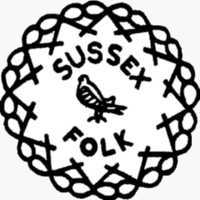Sussex Harmony (Quire)

South Malling, Lewes District
Thursday 8.00-10.00pm
South Malling Parish Church, Lewes.

Sussex Harmony was founded in 1992 to research, construct and perform the little known music of the
English Church and Independent Chapel from 1700 to 1850, and its derivative from New England and the Southern States - a
tradition which continues with new music to the present day.
The quire is always happy to consider bookings for
suitable events and has, in the past, performed both in this country and abroad for church services, concerts, mayoral
receptions, funerals and a wedding.
If you might be interested in joining the quire you would be very welcome,
whatever your ability. Tenors, trebles, altos, basses and instrumentalists are all welcome. The quire's membership is drawn
from people of all ages with a variety of interests.
For contact details see their
East Sussex Library Page.
The Quire's Costume
Sussex Harmony has, where possible, recreated the costume in rural England of
about 1760. The women wear-dresses with boned bodices, stomachers and full skirts. Complementing these are traditional shawls
and bonnets. The men's costume represents a cross section of society, with styles ranging from the more refined jacket and
waistcoat to the agricultural smock. Breeches, stockings and shoes or working boots (highlows) complete the picture.
"The Singing Seat"
"The Singing Seat" is a selection of 18th and 19th century West Gallery music taken
from the quire books of the parish church of St Laurence of Catsfield, near Battle in Sussex. The book has been researched by
Edwin Macadam and Tony Singleton, members of Sussex Harmony.
West Gallery Church Music
West Gallery church music, so described because it was often performed by a band of singers and instrumentalists from a gallery at the west end of a church,
was the repertoire of town and country churches from about 1700-1850. It differs markedly from cathedral music, both in style and function. It was written for, and
in many cases by, amateur musicians. Professional performance was not usually envisaged. As few local churches had organs at this time, it can always be
performed without organ accompaniment. A gallery band is well described in Thomas Hardy's novel Under the Greenwood
Tree (1872) and the repertoire is more scholastically examined in Nicholas Temperley's Music in the English Parish Church (CUP 1979).
Much of the repertoire consists of settings of the metrical psalms from the Elizabethan "Old Version" of Sternhold and Hopkins or the "New Version"
(1696) of Tate and Brady. There are also hymns, anthems and canticles, and some very lively Christmas carols. The music is often of a florid and joyful
nature; too joyful indeed for the reformers of the mid-19th Century Oxford movement, who sought to replace it with the more solemn repertoire typified by
Hymns Ancient and Modern. The style survived longer in the non-conformist chapels than in the established church, and remnants of it survive in the Methodist
Church and folk repertoire up to the present day. The sister tradition of Shapenote singing in the USA is unbroken, and as vigorous as ever.
West Gallery music was sung in many different ways - unaccompanied; with organ or other keyboard instruments; with one or more melody instruments
doubling the vocal lines; or with keyboard and melody instruments together. Doubling the voice parts with instruments helps singers whose sight reading is
limited, and is the performance style preferred by most specialist West Gallery quires. Traditionally the players used any available string, woodwind and some
brass instruments, and in modern practice one can use almost any melody instrument. Sometimes the instruments have brief passages to themselves, known
as "symphonies".
The underlay of the texts sometimes shows scant regard for classical standards. This is especially true in the metrical psalm settings, where a setting which suits
some verses of a psalm may give rise, in other verses, to inappropriate musical gaps in the sense of the text, or even to the splitting of a word.
The non-classical features described above are one reason why for many years the West Gallery music was ignored, falling between the stools of classical
musicians, who felt unable to take the often amateur composition technique seriously, and folk musicians, who felt that any notated style felt outside their
province. In recent years many musicians have re-evaluated the West Gallery repertoire by its own standards, and found much worthy of performance.
In recent years many groups, or quires, as they prefer to style themselves, dedicated to the
performance of this music, have sprung up, of which Sussex Harmony is one.
Sussex Folk Association: Sussex Harmony (Quire)
Copyright© SusFA/John Douglas/Sussex Harmony

